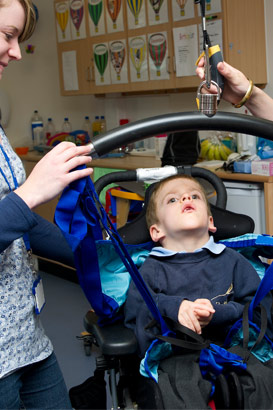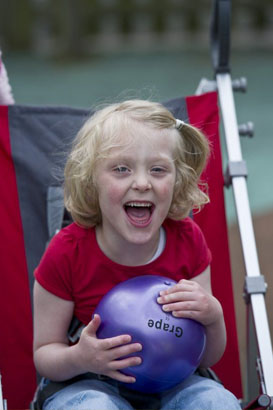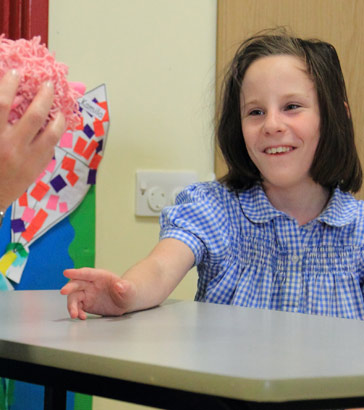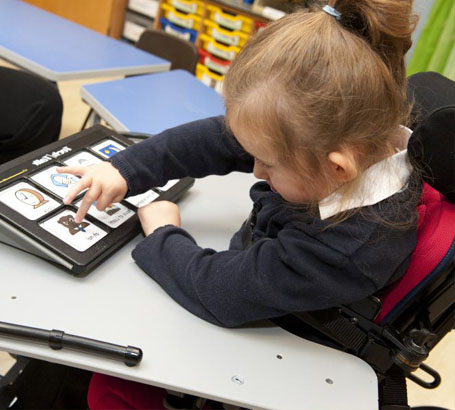
Through their exploration of the world around them, and interaction with others, babies learn:
- Knowledge about the physical world of objects and events;
- The underlying laws governing living and non-living things;
- How to understand and predict people's behaviour.
(Goswami and Bryant, 2007)
If they have difficulties in sensory perception (vision, audition, touch, etc.), motor function (reaching, grasping, moving eyes), or in relation to their emotional/reward system, it has a serious impact on their cognitive development (Goswami, 2008).
for cognition

Cognition includes:
- Attention
- Reasoning
- Problem solving
- Learning
- Language
- Memory
(Goswami, 2008)

Object permanence, causality, and symbolic thinking are fundamental...[to] cognitive development. Used together with gross and fine motor skills, they allow problem-solving (Wilks et al, 2010).
Children who seek causes learn and understand better than those who do not (Evangelou et al, 2009).
To find out more about milestones for cognition, have a look at the links below.
Developmental milestones (Kirby, 2012)
When over-aroused by novelty, unfamiliarity or excessive stimulation, infants regulate [their] state by disengaging and
moving their attention elsewhere.
Bryson, 2010
To learn effectively, children need to be able to redirect attention quickly. The ability to engage, switch and disengage attention is needed for a range of cognitive and social-cognitive milestone skills including:
- Focusing on specific events or objects;
- Engaging with other people;
- Discriminating and comparing (requires back and forth looking);
- Incidental learning;
- Joint attention;
- Self-regulation.
(Bryson, 2010)
flexible thinking

When children focus, shifts in attention are inhibited.
At age 3-4 years, children find it difficult to switch rules mid-activity (eg switching rules for sorting playing cards from
colour to shape).
However, if an adult asks them to verbally identify the cards according to the new rules before re-sorting them, even three-year-olds
can achieve this.
Therefore, although 3-4 year-olds find it difficult to shift attentional focus, they can overcome this with support and use
of language.
(Goswami and Bryant, 2007)

Babies and young children learn unconsciously, and seem to have inborn capabilities which allow them to:
- Distinguish simple forms (eg cross from circle);
- Recognise when two different sense experiences (eg sight alone and touch alone) relate to the same object;
- Categorise what they see;
- Learn features of different objects, identify features which occur together, and see relationships between features;
- Recognise patterns and sequences (eg one event following another);
- Recognise similarities between situations, and apply what they already know.
Similar learning events occur across all senses.
(Goswami and Bryant, 2007; Evangelou et al, 2009)

...babies as young as one hour old could imitate gestures like tongue protrusion and mouth opening after watching an adult
produce the same gestures.
Goswami and Bryant, 2007
At nine months, babies can copy how others manipulate objects.
When people imitate another person's actions or expressions the brain's 'mirror neuron' system becomes active. This inborn
system may be the reason that we can understand the actions and emotions of others.
(Goswami and Bryant, 2007)
of language

Children learn to understand themselves and their worlds through narrative and exploration. They need support for both
kinds of thinking (Evangelou et al, 2009).
Children create explanations to help them understand their experiences – how and why people, objects or events behave
or happen as they do. Active experience, language, pretend play and teaching support this.
We need to recognise children's causal bases, help them to adjust if the bases are false, and build upon those which are sound
(Goswami and Bryant, 2007).
problem-solving

Rather than feedback from adults, the most effective way of improving children's problem solving is to encourage them to:
- Show or explain how they have solved a problem;
- Show or explain why something was not correct (results in greater improvement).

Bryson, S.E. (2010) The early development of visual-spatial attention. In: R.E. Tremblay, R.G. Barr, R.DeV. Peters and M. Boivin (eds) Encyclopedia on Early Childhood Development (online). Montreal, Quebec: Centre of Excellence for Early Childhood Development.
Capone, N.C. and McGregor, K.K. (2004) Gesture development: a review for clinical and research practices, Journal of Speech, Language, and Hearing Research, 47, 173-186.
Goswami, U. (2008) Foresight Mental Capital and Wellbeing Project. Learning difficulties: Future challenges. London: The Government Office for Science.

Goswami, U. and Bryant, P. (2007) Children's Cognitive Development and Learning. London: Esmée Fairbairn Foundation/University of Cambridge.
Ramachandran, V.S. and Lindsay, M.O. (2006) Broken mirrors: a theory of autism, Scientific American, 295 (5), 63-69.
Rizzolatti, G., Fogassi, L. and Gillese, V. (2006) Mirrors in the mind, Scientific American, 295 (5), 54-61.